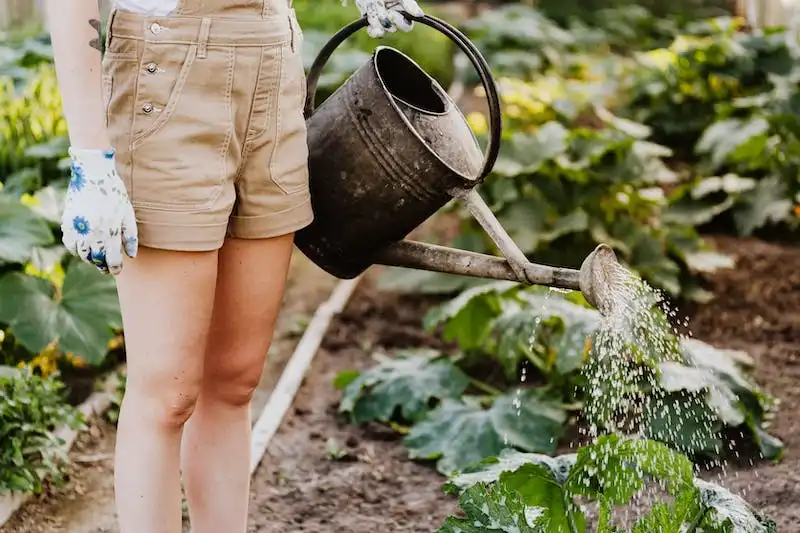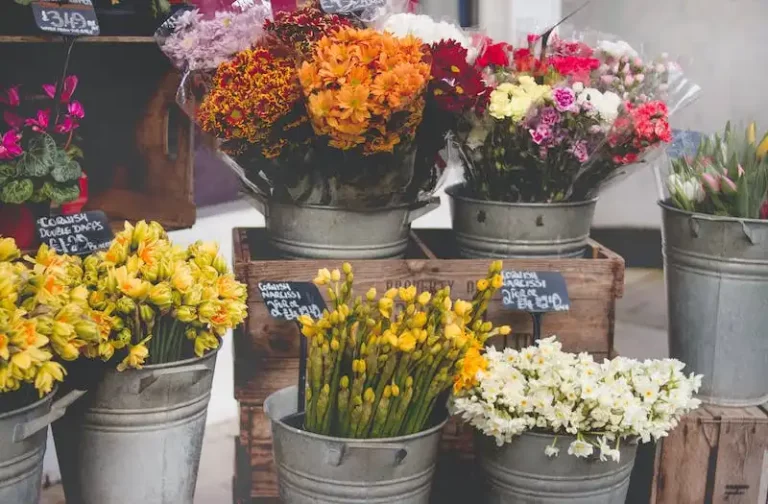When it comes to fruit trees, there are different factors to consider, such as space availability, productivity, and overall tree size. For those with limited space, smaller trees can be a great option, and this is where dwarf rootstock comes in. Dwarf rootstock is a unique way to keep fruit trees little and compact, making them suitable for small backyards and even pots. These dwarf trees can be planted in the same way as their standard-sized counterparts but will reach a much smaller height.
One of the advantages of dwarf rootstock is the ability to grow multiple fruit trees in a limited space. Instead of having one large apple or cherry tree taking up all the space, you can have several dwarf trees planted. This allows you to have a variety of different fruits, such as apples, pears, and plums, all in one bright and productive yard. You can also focus on growing ornamental fruit trees, which not only produce fruit but also make your yard visually appealing with their beautiful blossom and foliage.
Dwarf rootstocks are often clones of true-sized fruit trees and have the same fruit characteristics. For example, if you plant a dwarf apple tree, you can expect it to produce apples of the same size and taste as a standard-sized apple tree. The only difference is that the tree itself will be much smaller. This makes dwarf rootstock a great choice for those who are keen on a specific fruit variety but don’t have the space for a larger tree.
In terms of care, dwarf fruit trees require the same attention as any other fruit tree. They need regular watering, especially during dry periods, and proper soil amendment to ensure they receive the necessary nutrients. Disease and pest control is also essential to keep the tree healthy and productive. Additionally, pruning is crucial to maintain the desired tree shape and encourage fruit production.
In conclusion, dwarf rootstock is a great option for those with limited space or who enjoy gardening in pots. These smaller trees not only save space but also provide a variety of fruits. They can be a true asset for any gardener, whether you have a small backyard or want to bring fruit cultivation into your homesteading practices. Little in size yet productive in nature, dwarf rootstock is a selection that can help you enjoy the benefits of fruit trees even in small spaces.
9 Best Dwarf Fruit Trees to Grow in Small Spaces
If you have a small homestead or a limited space in your garden, growing dwarf fruit trees can be the perfect choice. These trees are smaller in size compared to their standard-sized counterparts but have the same resilience and ability to produce fruit. Whether you are an experienced gardener or just starting out, these dwarf fruit trees are a great addition to any space.
1. Dwarf Apple Trees
- Perfect for smaller spaces where standard-sized apple trees may not fit
- Choose from a selection of dwarfing rootstocks and apple varieties
- Harvesting can usually start within 3 to 5 years
2. Dwarf Pear Trees
- Similar to dwarf apple trees, dwarf pear trees are a great choice for small gardens
- Multiple varieties of dwarf pear trees are available for planting
- Harvesting can be done in late summer
3. Dwarf Apricot Trees
- Perfect for growing in pots or small spaces
- Choose dwarf apricot trees for a bountiful harvest during summer
4. Dwarf Citrus Trees (Lemons and Limes)
- Lemons and limes can be grown as dwarf fruit trees
- Grafting onto a suitable dwarfing rootstock is needed
- These trees thrive in bright and well-drained areas
5. Dwarf Cherry Trees
- Dwarf cherry trees are perfect for smaller gardens
- Find varieties that are suitable for your specific climate zones
- Enjoy the sweet bounty of cherries in the summer
6. Dwarf Quince Trees
- Quince trees can be grown as dwarf fruit trees
- These trees are known for their multiple flowering periods
- Choose a well-drained area for planting
7. Dwarf Plum Trees
- Dwarf plum trees are a great contrast against tall trees
- Choose from a selection of dwarf plum tree varieties
- Enjoy the delicious plums when they are ripe
8. Dwarf Fig Trees
- Dwarf fig trees are an excellent choice for small spaces
- These trees can be grown in pots or directly in the ground
- Enjoy the sweet and succulent figs in late summer
9. Dwarf Peach Trees
- Perfect for smaller gardens or spaces
- Choose dwarf peach trees for their compact size and vigour
- Enjoy the juicy peaches when they are ready to be harvested
When selecting dwarf fruit trees, it’s important to choose varieties that are suitable for your climate and growing conditions. Consider factors such as the amount of sunlight and the quality of soil. It’s also essential to provide proper care and management, including pruning and regular watering, to ensure healthy growth and bountiful harvests. Whether you’re a seasoned gardener or a beginner, these dwarf fruit trees offer a perfect solution for growing fruit in small spaces.
Apple Trees
Apple trees are a popular choice for many gardeners due to their ease of cultivation and the variety of fruits they produce. When choosing an apple tree, you have the option to select either a standard-sized or dwarf rootstock.
The standard-sized rootstock is the traditional choice and is suitable for larger spaces. The tree grafted onto a standard-sized rootstock will reach a size of about 15-25 feet tall and wide. These trees are ideal if you have ample space and want to grow full-sized apple trees with multiple varieties.
In contrast, a dwarf rootstock is a smaller selection best suited for smaller gardens or for those who want to grow apple trees in containers. The tree grafted onto a dwarf rootstock will stay much smaller, typically around 4-8 feet tall and wide, making it easier to manage and harvest without the need for ladders. Although the fruits produced by dwarf apple trees are smaller than their standard-sized counterparts, they are still tasty and ripe for eating.
One important thing to note is that the size of the tree does not necessarily dictate the size of the fruit. Both standard-sized and dwarf apple trees can produce a wide range of apple sizes, from small and tart to large and sweet, depending on the variety chosen.
When growing apple trees, it is important to consider factors such as proper fertilizing, irrigation, and overwintering techniques. Each type of rootstock may have different requirements in these areas, so it is essential to do your research and choose the rootstock that best suits your needs.
In conclusion, whether you choose a standard-sized or a dwarf rootstock for your apple tree, you can enjoy growing and harvesting delicious apples right in your own backyard. The choice ultimately depends on the purpose of your tree and the available space you have. Both options have their own unique appeal and can be low-maintenance, providing you with a bountiful harvest year after year.
Pear Trees
Pear trees are a popular choice for backyard gardens due to their unique variety and low-maintenance qualities. They are cold-hardy and can grow in zones 5 to 9, making them suitable for many climates. Pear trees are known for their resilience, disease resistance, and the quantity of fruits they produce.
When selecting a pear tree variety, it is essential to consider the size. Standard-sized trees grow to an average height of 15 to 20 feet and require ample space in the backyard. However, if space is limited, a dwarf rootstock is an excellent choice. Dwarf rootstocks, also known as ‘dwarf’ or ‘bonsai’ trees, stay smaller, typically growing only 8 to 10 feet in height. These smaller trees are ideal for backyards with limited space.
One of the advantages of dwarf pear trees is their low-maintenance nature. They require less pruning and are easier to manage. Dwarf trees are also known for their vigour and the fruit yield they produce. The smaller size of dwarf pear trees allows for easier fruit picking and caring for the tree.
Another advantage of dwarf pear trees is their cold-hardiness. They can withstand colder temperatures without compromising the tree’s health. This resilience makes them a suitable choice for regions with harsh winters.
In terms of fruit selection, there is a wide variety of pears to choose from. Traditional pear varieties such as Bartlett, Anjou, and Bosc are commonly available, each with its unique taste and texture. Some varieties, like Blondee and Eureka, are known to be more disease-resistant and have a longer shelf life. Others are ready to be harvested and enjoyed in late summer.
When planting pear trees, it is important to ensure they are planted in a well-drained site with good air circulation. Amend the soil with organic matter to provide a nutrient-rich base for the tree to grow. Regular watering, especially during dry spells, will help the tree establish and thrive.
For those interested in growing pears in smaller spaces, dwarf pear trees are a fantastic choice. Whether you have limited space in your backyard or want a unique addition to your garden, dwarf pear trees offer a bounty of tasty fruit in a compact size. Their low-maintenance qualities and cold-hardy nature make them an excellent option for the backyard gardener.
Cherry Trees
Cherry trees are a popular choice for gardens and orchards due to their delicious fruit and ornamental beauty. They come in various sizes, from standard-sized to dwarf and columnar selections. When it comes to cherry trees, there are several factors to consider.
Standard-sized cherry trees grow larger and require more space compared to their dwarf counterparts. They can reach heights of up to 14 feet and have an average lifespan of 20 years. These trees are well-suited for larger gardens or orchards where there is plenty of space available. Standard-sized cherry trees produce an abundant harvest of tart cherries, which are perfect for baking and preserving.
Dwarf cherry trees, on the other hand, are much smaller in size, typically reaching heights of 7 to 10 feet. They are a good choice for smaller gardens or for those who want to grow cherries in containers or pots. Dwarf cherry trees are also easier to manage when it comes to pruning, watering, and fertilizing. These trees are cold-hardy and can be grown in a variety of soils.
Another selection to consider is the columnar cherry tree. These trees have a tall, narrow growth habit, making them a great option for smaller spaces. They can reach heights of up to 13 feet and require minimal pruning. Columnar cherry trees produce an abundance of fruit and can be grown in both containers and garden spaces.
| Type of Cherry Tree | Height | Suitable for | Harvest Time |
|---|---|---|---|
| Standard-sized | Up to 14 feet | Larger gardens and orchards | Late summer to early autumn |
| Dwarf | 7 to 10 feet | Smaller gardens and containers | Mid to late summer |
| Columnar | Up to 13 feet | Smaller spaces and containers | Early to mid-summer |
When it comes to soil preparation, cherry trees prefer well-drained soil with good fertility. It’s important to amend the soil with organic matter and ensure proper drainage to prevent waterlogged roots. Regular watering and fertilizing are essential for the healthy growth of cherry trees.
In terms of disease management, cherries are susceptible to various pests and diseases like cherry fruit fly and fungal infections. Proper pruning and providing good airflow can help prevent and manage these issues. It is also recommended to select disease-resistant cherry tree varieties.
Cherry trees are a productive and rewarding fruit tree option for homesteading, backyard orchards, and gardens. Whether you choose a standard-sized, dwarf, or columnar selection, cherry trees will provide you with delicious fruit and ornamental beauty for years to come.




